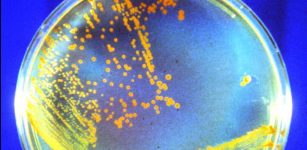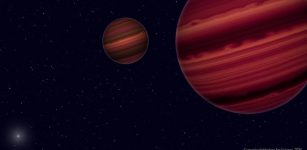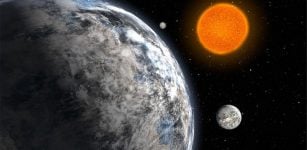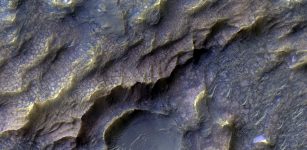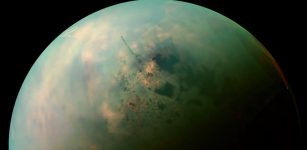Researchers Decipher Mysterious Atmosphere Of ‘Rosetta Stone’ Exoplanet
Eddie Gonzales Jr. – MessageToEagle.com – A study led by the Southwest Research Institute suggests that TOI-270 d, an exoplanet between Earth and Neptune in size, may be a giant rocky planet with a thick, hot atmosphere. Located 73 light years from Earth, TOI-270 d could help us understand a new class of planets.
An SwRI-led study modeled the chemistry of TOI-270 d, a nearby exoplanet between Earth and Neptune in size, finding evidence that it is a giant rocky world (super-Earth) surrounded by a deep, hot atmosphere. NASA’s JWST detected gases emanating from a region of the atmosphere over 1,000 degrees Fahrenheit — hotter than the surface of Venus. The model illustrates a potential magma ocean removing ammonia (NH3) from the atmosphere. Hot gases then undergo an equilibration process and are lofted into the planet’s photosphere where JWST can detect them.
Exoplanets orbit stars outside of our solar system. Sub-Neptunes refer to planets between the size of our solar system’s largest rocky planet, Earth, and the smallest gas giant, Neptune.
“The nature of sub-Neptunes is one of the hottest topics in exoplanetary science,” said SwRI’s Dr. Christopher Glein, first author of a paper accepted for publication in the Astrophysical Journal. “These sub-Neptunes are the most abundant size range of planets in the galaxy, yet none exist in our solar system. They are exotic. Temperate sub-Neptunes are of even higher interest because some could be habitable.”
Scientists have proposed that sub-Neptune exoplanets orbiting in the habitable zone, where liquid water can exist on the surfaces of planets, could be massive ocean worlds with thin hydrogen-rich atmospheres, referred to as “Hycean” (hydrogen-ocean) worlds. For example, planet K2-18 b was thought to be a Hycean world. However, recent James Webb Space Telescope (JWST) data from TOI-270 d show that a simpler model based on a giant (super-Earth) rocky interior shrouded by a thick, hot atmosphere can explain the data better.
“The search for habitable worlds continues! The JWST data on TOI-270 d collected by Björn Benneke and his team are revolutionary,” Glein said. “I was shocked by the level of detail they extracted from such a small exoplanet’s atmosphere, which provides an incredible opportunity to learn the story of a totally alien planet. With molecules like carbon dioxide, methane and water detected, we could start doing some geochemistry to learn how this unusual world formed.”
NASA’s JWST detected gases that indicate temperatures over 1,000 degrees Fahrenheit — hotter than the surface of Venus. The new geochemical model illustrates how gases undergo an equilibration process at these temperatures and are then lofted upward where JWST can detect them.
“While it is a bit disappointing to find that TOI-270 d is unlikely to be habitable, this planet still offers a fantastic opportunity to explore alternative paths of planetary origins and evolution,” Glein said. “We are learning much more about the crazy configurations of planets that nature comes up with.”
Scientists have puzzled over the absence of ammonia in temperate sub-Neptune atmospheres. Previous models predicted ammonia formation in hydrogen-rich, hot atmospheres. New research suggests ammonia is depleted by processes like nitrogen gas production at high temperatures and its dissolution into a molten rock ocean. Glein’s team also found the planet is likely nitrogen-poor because its building blocks, such as chondritic meteorites, are typically low in nitrogen.
“I see a lot of parallels between planetary science and biology,” Glein said. “A core set of building blocks and rules for interactions result in an explosion of diverse forms. We’re starting to see some of that diversity come through in compositional signatures from JWST.”
This study demonstrates that exoplanetary geochemistry now approaches a level of sophistication comparable to that achieved within our own solar system. Geochemical tools developed for the solar system can now be applied to exoplanet atmospheres. These studies provide new insights into atmospheric temperatures, possible magma oceans and origins of planetary atmospheres.
“We wanted to paint a more complete picture of the inner workings and history of an exoplanet by approaching the problem in multiple ways,” Glein said. “Last time I checked, we have discovered over 5,800 confirmed exoplanets. TOI-270 d is just one of them. It’s going to be very interesting to see what the next exoplanet has in store for us.”
Written by Eddie Gonzales Jr. – MessageToEagle.com Staff Writer


